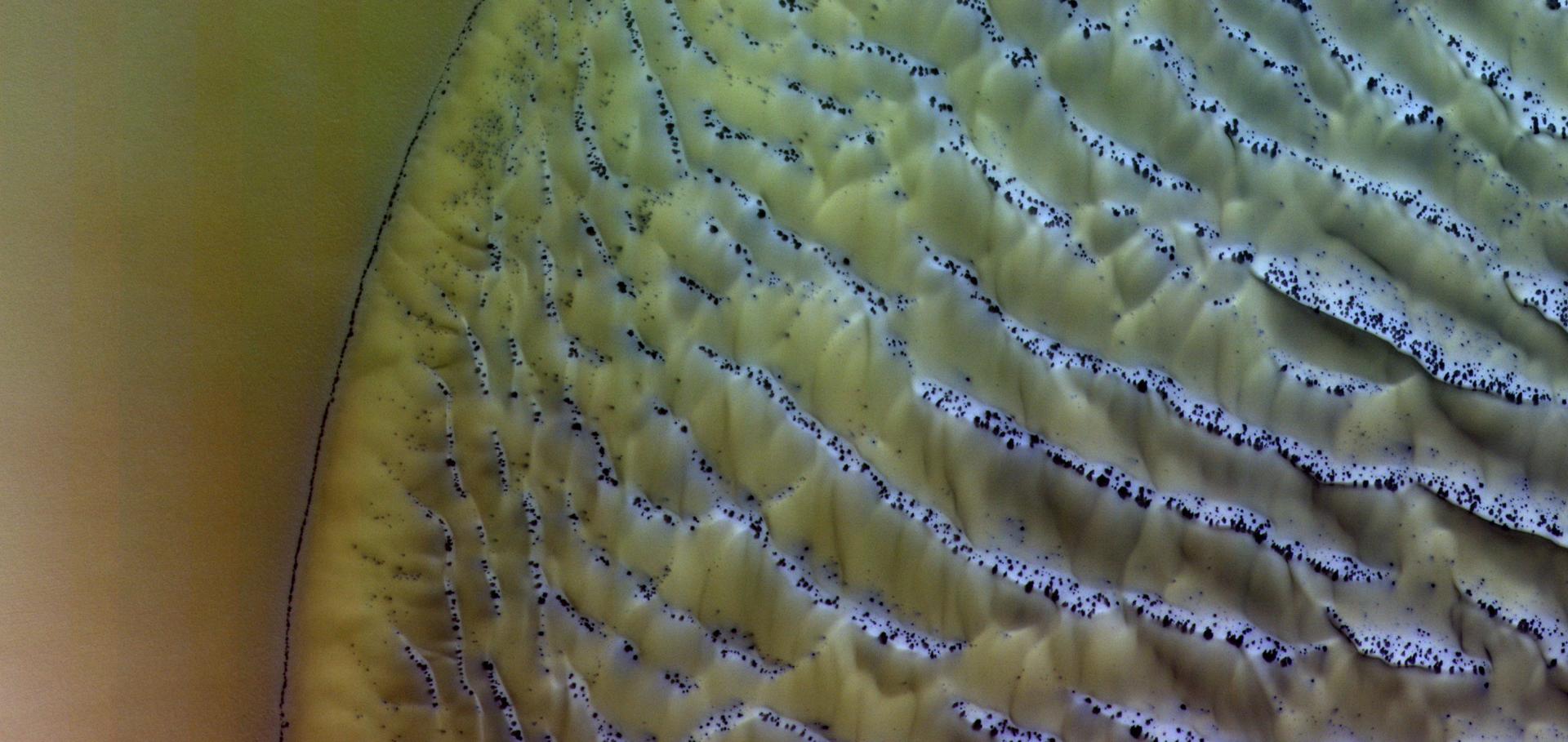Upper limits for phosphine (PH3) in the atmosphere of Mars
Astronomy and Astrophysics EDP Sciences 649:May 2021 (2021) L1
Abstract:
Phosphine (PH3) is proposed to be a possible biomarker in planetary atmospheres and has been claimed to have been observed in the atmosphere of Venus, sparking interest in the habitability of Venus’s atmosphere. Observations of another biomarker, methane (CH4), have been reported several times in the atmosphere of Mars, hinting at the possibility of a past or present biosphere. The Atmospheric Chemistry Suite on the ExoMars Trace Gas Orbiter has a spectral range that includes several absorption lines of PH3 with line strengths comparable to previously observed CH4 lines. The signature of PH3 was not observed in the 192 observations made over a full Martian year of observations, and here we report upper limits of 0.1–0.6 ppbv.Seasonal reappearance of HCl in the atmosphere of Mars during the Mars year 35 dusty season
Astronomy and Astrophysics EDP Sciences 647:March 2021 (2021) A161
Abstract:
HCl was discovered in the atmosphere of Mars for the first time during the global dust storm in Mars year (MY) 34 (July 2018) using the Atmospheric Chemistry Suite mid-infrared channel (ACS MIR) on the ExoMars Trace Gas Orbiter. The simultaneity of variations in dust and HCl, and a correlation between water vapour and HCl, led to the proposal of a novel surface-atmosphere coupling analogous to terrestrial HCl production in the troposphere from salt aerosols. After seasonal dust activity restarted in MY 35 (August 2020), we have been monitoring HCl activity to determine whether such a coupling was validated. Here we present a new technique for analyzing the absorption features of trace gases close to the ACS MIR noise level and report that HCl mixing ratios are observed to rapidly increase in both hemispheres coincidentally with the onset of the MY 35 perihelion dust season. We present the temporal evolution of the vertical distribution of HCl (0.1–6 ppbv) and of dust activity in both hemispheres. We also report two observations of > 2 ppbv HCl below 10 km in the northern hemisphere during the aphelion period.Transient HCl in the atmosphere of Mars
Science Advances American Association for the Advancement of Science 7:7 (2021) eabe4386
Abstract:
A major quest in Mars' exploration has been the hunt for atmospheric gases, potentially unveiling ongoing activity of geophysical or biological origin. Here, we report the first detection of a halogen gas, HCl, which could, in theory, originate from contemporary volcanic degassing or chlorine released from gas-solid reactions. Our detections made at ~3.2 to 3.8 μm with the Atmospheric Chemistry Suite and confirmed with Nadir and Occultation for Mars Discovery instruments onboard the ExoMars Trace Gas Orbiter, reveal widely distributed HCl in the 1- to 4-ppbv range, 20 times greater than previously reported upper limits. HCl increased during the 2018 global dust storm and declined soon after its end, pointing to the exchange between the dust and the atmosphere. Understanding the origin and variability of HCl shall constitute a major advance in our appraisal of martian geo- and photochemistry.The vertical structure of CO in the Martian atmosphere from the ExoMars Trace Gas Orbiter
Nature Geoscience Springer Nature 14:2 (2021) 67-71
Abstract:
Carbon monoxide (CO) is the main product of CO2 photolysis in the Martian atmosphere. Production of CO is balanced by its loss reaction with OH, which recycles CO into CO2. CO is therefore a sensitive tracer of the OH-catalysed chemistry that contributes to the stability of CO2 in the atmosphere of Mars. To date, CO has been measured only in terms of vertically integrated column abundances, and the upper atmosphere, where CO is produced, is largely unconstrained by observations. Here we report vertical profiles of CO from 10 to 120 km, and from a broad range of latitudes, inferred from the Atmospheric Chemistry Suite on board the ExoMars Trace Gas Orbiter. At solar longitudes 164–190°, we observe an equatorial CO mixing ratio of ~1,000 ppmv (10–80 km), increasing towards the polar regions to more than 3,000 ppmv under the influence of downward transport of CO from the upper atmosphere, providing a view of the Hadley cell circulation at Mars’s equinox. Observations also cover the 2018 global dust storm, during which we observe a prominent depletion in the CO mixing ratio up to 100 km. This is indicative of increased CO oxidation in a context of unusually large high-altitude water vapour, boosting OH abundance.Transient HCl in the atmosphere of Mars
University of Oxford (2021)


